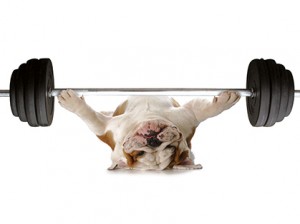Steps to Help Keep Pets Healthy as Part of New Year’s Resolutions
 Are you making a New Year’s resolution for 2019? While many people set goals to get healthy in the new year, the American Veterinary Medical Association (AVMA) and Pet Food Institute (PFI) encourage pet owners to proactively review their pet’s health in 2019, as well.
Are you making a New Year’s resolution for 2019? While many people set goals to get healthy in the new year, the American Veterinary Medical Association (AVMA) and Pet Food Institute (PFI) encourage pet owners to proactively review their pet’s health in 2019, as well.
“Just as you should consult your physician before embarking on a new fitness or nutrition regimen, you should consult with your pet’s veterinarian before making any changes to your pet’s diet or starting them on a new exercise program,” said Dr. John de Jong, president of AVMA.
Published studies suggest that up to 59 percent of dogs and cats may be overweight, though there isn’t a single cause or cure. While overfeeding is a common cause of pets gaining weight, other factors such as endocrine disorders may affect your pet’s metabolism, including hypothyroidism or hyperadrenocorticism (Cushing’s Syndrome).
Your veterinarian can assess your pet’s ideal weight, caloric needs, and any contributing health issues. If your pet does need to lose weight, work with your veterinarian to develop a safe weight reduction plan.
“As we make a commitment to ourselves in the new year, it’s important to also consider ways we can support our four-legged family members,” said Dana Brooks, president and CEO of PFI. “Just a few simple steps can help support a pet’s wellbeing in 2019, such as keeping them at a healthy weight and providing a complete and balanced diet.”
Specific steps for unique challenges include:
- For the treat hound: Treats should be kept to no more than 10 percent of your pet’s daily calories. If your pup is in the habit of getting multiple treats throughout the day, review the amount of food provided at mealtimes with your veterinarian to ensure your pet is receiving the appropriate share of treats. Once the day’s ration of treats is gone, it’s gone.
- For the guzzlers: Eating too quickly can cause problems other than obesity. Slow feeder bowls and meal dispensing dog toys or puzzles require dogs to eat more slowly, engage mental effort and increase activity, which in turn burns calories.
- What’s yours is mine: In a multi-cat household, it may be necessary to have separate food areas for cats. You may put one cat’s food at a higher level out of reach from a heavier cat that may have difficulty reaching food that is accessible to the cat of appropriate weight. Baby gates, cat doors and cardboard boxes with appropriately sized entrances to admit some and block other cats can also be utilized. Discuss the use of automatic feeders, including those that are microchip or RFID tag scanning, with your veterinarian to ensure that the correct cat has access to the correct food.
- Balance is key: Ensure your pet is receiving complete and balanced nutrition. Pets need a range of essential nutrients to provide energy, support body functions, such as vision and immunity, and promote healthy growth and bone structure for every life stage. When selecting food for your cat or dog, look for a pet food labeled as “complete and balanced” and for your pet’s life stage.
- Exercise and playtime: Pay attention to what activities, environments, or playmates (human or otherwise) engage your pets. Some pets are happy to go on long walks with their owner, while others that thrive in social settings may burn more calories engaging with a group. To exercise a cat, engage them with a feather, toys, or laser pointer, and try to get them running after a toy as they swat at it.
“Just like humans, overweight dogs and cats are more likely to get diseases, such as diabetes, heart disease, skin conditions, liver disease and joint problems,” says Dr. de Jong. “Starting a diet and exercise regimen for both you and your pet in 2019 will result in improved health and perhaps a longer life for both of you.”
For more information on pet health, visit www.avma.org. For more information about U.S. pet food, please visit www.petfoodinstitute.org.
Short URL: https://caninechronicle.com/?p=156497
Comments are closed











